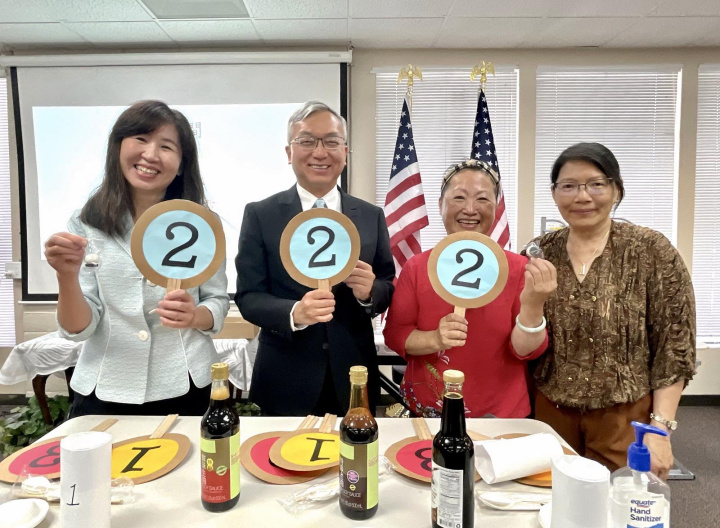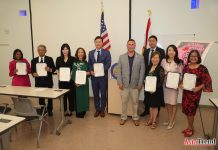
On August 12, Agape Asian Mission, Guli Sowing Seeds Culture Enterprise, and Cupertino Taichung Friendship Cities Association collaboratively organized a cultural exhibition"Fusion of food and artistic expression: soy sauce taste testing." to spread awareness of Chinese food culture through the community.

Deputy Director-General John Chu of the Taipei Economic and Cultural Office in San Franciso, Culture Center of Taipei Economic and Culture Offices in San Francisco (Milpitas) Director Sophia Chuang, Cupertino School Board member Ava Chiao, Agape Asian Mission Chairman Dr. Ye-Ming Wu spoke about the importance of making sure the next generation of Taiwanese-Americans get exposure to their culture.
Weini Liem, President of the Cupertino Taichung Friendship Cities Association President, first gave a welcome speech, thanking everyone for their attendance. She emphasized that the purpose of the event was to explore Chinese culture through the production of soy sauce. President Liem hoped that the event could bring not only visual enjoyment but also enhance everyone’s knowledge of traditional Chinese art and culture to make healthier soy sauce choices.
Keynote speaker Pamela Chi shared her thoughts – “When mentioning soy sauce, it’s often closely associated with Chinese cuisine in the same sentence. From simple soy sauce mixed with rice dishes to banquet dinners featuring DongPo meat dishes, soy sauce is an indispensable condiment. Soy sauce is a precious cultural heritage passed down by Chinese ancestors. Brewing soy sauce is not only a technique but also an art. Therefore, the market is filled with a variety of products, each with its own unique flavor and characteristics.”
Even a tiny drop of soy sauce, with its rich and mellow taste, can evoke homesickness in many overseas Chinese. At the event, in addition to discussing the history, raw materials, and manufacturing process of soy sauce, paintings that use soy sauce as a pigment, replicas of dishes, and poetry about culinary topics written by well-known intellectuals were showcased.
Attendees participated in handwork activities while enjoying steamed buns and blind taste-testing different soy sauces. Everyone seemed to have an enjoyable and enriching afternoon together.











